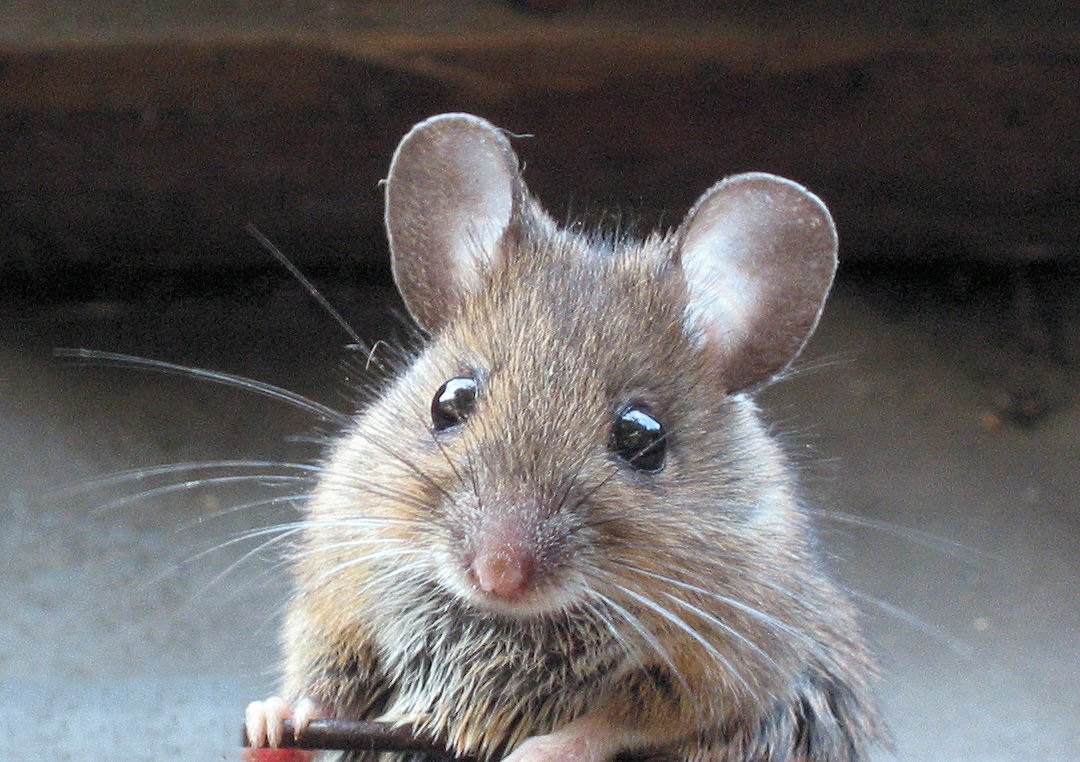Mus musculus: Difference between revisions
No edit summary |
No edit summary |
||
| (One intermediate revision by one other user not shown) | |||
| Line 1: | Line 1: | ||
[[Image:Mouse.jpg|thumb|right | [[Image:Mouse.jpg|thumb|right]] | ||
''Mus musculus'' is the scientific name for a mouse. | ''Mus musculus'' is the scientific name for a mouse. Mice'' ''are the most commonly used [[Model organisms|model organisms]] in research labs, as they have very similar physiologies to [[Human|humans]] and therefore the impact of human diseases and drugs can be tested in mice and the findings applied to humans. For example, mice have been used as disease models for [[Down's Syndrome|Down's Syndrome]] and [[Cystic Fibrosis|Cystic Fibrosis]] and they are prone to similar illnesses as humans are, such as [[Obesity|obesity]] and drug addictions, therefore these can be studied in them<ref>National Human Genome Research Institute. Background on Mouse as a Model Organism. 2002 [cited 5.12.17] Available from: https://www.genome.gov/10005834/background-on-mouse-as-a-model-organism/</ref>. | ||
Furthermore, the ''Mus musculus'' [[Genome|genome]] was sequenced in 2002 and it was found that many of their [[Gene|genes]] have a human counterpart, which can be experimented with, creating [[Mutations|mutations]] in mice which mirror human diseases | Furthermore, the ''Mus musculus'' [[Genome|genome]] was sequenced in 2002 and it was found that many of their [[Gene|genes]] have a human counterpart, which can be experimented with, creating [[Mutations|mutations]] in mice which mirror human diseases<ref>Web Page: The Wellcome Trust: The Human Genome 'Why the mouse?' http://genome.wellcome.ac.uk/doc_WTD023552.html last assessed: 25/11/2014</ref>. Mice have also been used often in research to create '[[Transgenic Organism|transgenic mouse]]' by inserting foreign [[DNA|DNA]] into mice [[Embryo|embryo]]s<ref>Web Page: The Wellcome Trust: The Human Genome 'Why the mouse?' http://genome.wellcome.ac.uk/doc_WTD023552.html last assessed: 25/11/2014</ref>. | ||
Mice have a short life cycle of | Mice have a short life cycle of 2 months and they produce 6 - 15 offspring in each litter. This short life cycle and large number of offspring produced in each litter make mice a good model organism. | ||
=== References === | |||
<references /> | <references /> | ||
Latest revision as of 10:35, 17 October 2018

Mus musculus is the scientific name for a mouse. Mice are the most commonly used model organisms in research labs, as they have very similar physiologies to humans and therefore the impact of human diseases and drugs can be tested in mice and the findings applied to humans. For example, mice have been used as disease models for Down's Syndrome and Cystic Fibrosis and they are prone to similar illnesses as humans are, such as obesity and drug addictions, therefore these can be studied in them[1].
Furthermore, the Mus musculus genome was sequenced in 2002 and it was found that many of their genes have a human counterpart, which can be experimented with, creating mutations in mice which mirror human diseases[2]. Mice have also been used often in research to create 'transgenic mouse' by inserting foreign DNA into mice embryos[3].
Mice have a short life cycle of 2 months and they produce 6 - 15 offspring in each litter. This short life cycle and large number of offspring produced in each litter make mice a good model organism.
References
- ↑ National Human Genome Research Institute. Background on Mouse as a Model Organism. 2002 [cited 5.12.17] Available from: https://www.genome.gov/10005834/background-on-mouse-as-a-model-organism/
- ↑ Web Page: The Wellcome Trust: The Human Genome 'Why the mouse?' http://genome.wellcome.ac.uk/doc_WTD023552.html last assessed: 25/11/2014
- ↑ Web Page: The Wellcome Trust: The Human Genome 'Why the mouse?' http://genome.wellcome.ac.uk/doc_WTD023552.html last assessed: 25/11/2014